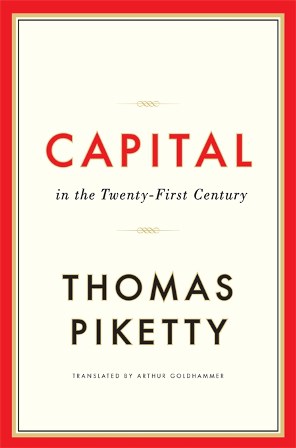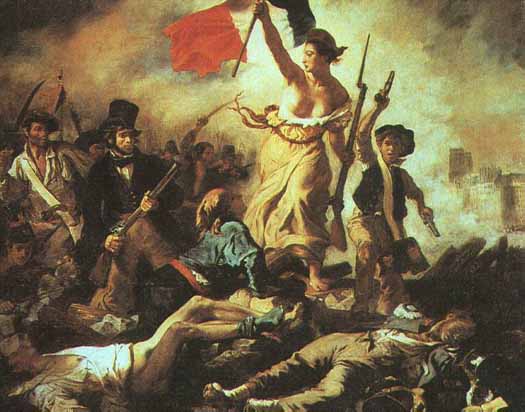This post represents the first installment of our special review section on Capital in the Twenty-First Century. Second and third installments available here and here.
Piketty, Thomas. 2014. Capital in the Twenty-First Century. Harvard: Harvard University Press. 696 pp. Hc: $39.95. ISBN: 9780674430006.
Severe inequality of wealth and income are at the surface of popular and political discourse today, and since its publication in English in 2014 Thomas Piketty’s Capital in the 21st Century has played an important part in this discussion. This review considers the impact and limitations of Piketty’s lauded contribution to contemporary thinking about inequalities of wealth and income.
In brief, Capital tells a story that is shocking in its familiarity: capitalism breeds and feeds off wealth and income inequality, which are becoming increasingly extreme. With excellence and flare, Piketty takes on the dubious pleasure of reining in centuries of tax statistics and other data in order to plot the rise, fall, and rise again of income and wealth inequality, principally in Europe and the US. He journeys through the French Revolution and the Industrial Revolution, through the martial upheaval of the 20th century, up to the present day, before finally looking to the future. The picture, overall, is bleak.
Using the deceptively simple formula of r<g (with ‘r’ as return on investment/wealth and ‘g’ as economic growth), Piketty argues that, all things being equal (as it were), the return on property and investments will always outstrip the rate of economic growth in a free market economy. This means that the ‘natural’ state of capitalism is to favour a small elite who, under the auspices of competition and equality of opportunity, are able to amass a disproportionately large amount of income and wealth relative to the whole population. Only the intervention of government to plan-out this natural tendency to stark inequality, or sudden and rapid economic growth, will tip the scale the other way. With slow economic growth, the already-rich get much, much richer, and labour remains divested of the wealth that it creates.
Piketty suggests that the historical anomalies of the 1900s – in particular the political and economic turmoil wrought by the First and Second World Wars, and the subsequent shift towards redistributive economic policies in some nations – led to a pause in the rise of stark inequalities.

The huge amount of historical data in Piketty’s analysis lends itself to a complex treatment of questions about inequality, not least because this deep statistical analysis is married to an engaged assessment of the social and political context in which the data emerge. Moving away from the stark mathematical number play of more straightforward economic analyses, Pikkety’s is a return to political economy in the critical vein of another rather famous economic thinker to whom the book’s title very purposefully nods. One of the great successes of Capital is that it breathes new life into historically-, politically-, and sociologically-informed economics. In part it owes its salience to the fact that material reality, while inevitably still seen through Piketty’s particular lens, is placed before axiomatic theoretical abstraction.
This is a great strength of the book, but it is not without its limitations. Indeed, it could be argued that Piketty does not go far enough in his consideration of the social and cultural context of his analysis. Arguing at once for the need to understand the social and historical peculiarity of patterns of inequality in our recent past, while at the same time offering a universalising and politically-charged conceptual framing for this inequality seems limiting. In part this is because it assumes the very ‘natural’ qualities of capitalism, as understood through economic theory, that are used to justify unequal systems in the first place. Anthropologists interested in economic systems have for decades argued that the seeming axioms of the free market are in fact a system of meaning-making that is by no means universal to human society, in the past or in the future. The recent financial crisis was proof enough of the failure of global economic systems to behave according to their own supposed rules. An even more critical, reflexive, anthropological approach might allow the book to question not only the ideological underpinnings of the capitalism that it describes, but also the intellectual means that Piketty uses to describe it.
The same critical lens could be adopted towards the data in Capital. One of the most revealing features of the mountain of data that Piketty so masterfully wields in the book is that it shows what remains to be discovered. There are still aspects and areas of inequality that remain invisible or too obscure to analyse. Indeed, it appears that one of the most important means of accumulating truly disproportionate levels of wealth among a small elite is to conceal the provenance, nature and extent of this wealth and income. If not plotting the whole map of inequality, Piketty’s analysis is undoubtedly powerful in pointing us to the extensive uncharted territory that remains.
We might also be critical of his proposed solution to Piketty’s portent of impending, increasing inequality of the future. Piketty suggests that global taxation of the extremely wealthy is the answer; and while this may well be the case, it is difficult to imagine that so-called Robin Hood taxes would be politically viable or practicable in many of the world’s nation-states (perhaps barring Scandinavia). This tells us something about the enduring philosophical and ideological power of capitalist thinking about aspiration and the drivers of human existence (not least among economists), and also implies that a long-term solution to this kind of economic problem is likely to involve social and cultural conditions. Changing the cultural value of accruing disproportionately large amounts of individual or family wealth may make extensive taxes on the rich more palatable (or no longer necessary), rather than the other way around. In the UK context, the geographer Danny Dorling’s Inequality and the 1% presents an analysis of inequalities complimentary to Piketty’s by considering the demographic spread of inequality and its relationship to property; but Dorling also points to the importance of understanding the cultural perspectives of those who maintain this disproportionate wealth and income if we are to make sense of what drives this particular aspect of contemporary global capitalism.
Understanding patterns of inequality is profoundly important; and understanding the ways in which this inequality is legitimized by those who perpetuate it is fundamental to changing these patterns of inequality.
Capital is a tome that seems to have been bought and written about much more than it has been read. This is partly because it is long, and exhaustive. It is also partly because Capital is written in a tone that, while entertaining and witty, is more serious and less accessible than many readers have become accustomed to from big-picture public intellectuals of the likes of Steven Pinker or Jared Diamond. Capital’s popular success can be attributed partly to its timely arrival on the popular intellectual scene. In the wake of the global financial crisis, across the world normal people have now seen behind the curtain that used to mask the often dubious inner workings of global financial systems. Those who may have previously considered themselves as the ‘haves’ may now have less; or they may have come to the conclusion, via people like Piketty, that they were the ‘have-lesses’ all along but simply did not know it until now.
Yet it is also powerful in reminding us of the extent to which the current ideological underpinnings of global consumer capitalism have become naturalized to the point that we no longer question their sanctity. The current order of things encourages us to accept with a shrug the darkest shadows of the current political and economic order as if things had always been this way, and will always remain so. Piketty’s profound contribution is to provide an empirical basis and a polemic from which to revitalise popular and academic discussion around inequality – both in terms of questioning the fundamental tenets of capitalism, and in challenging the parameters by which we analyse the relationship between the social, cultural and economic attributes of inequality.







